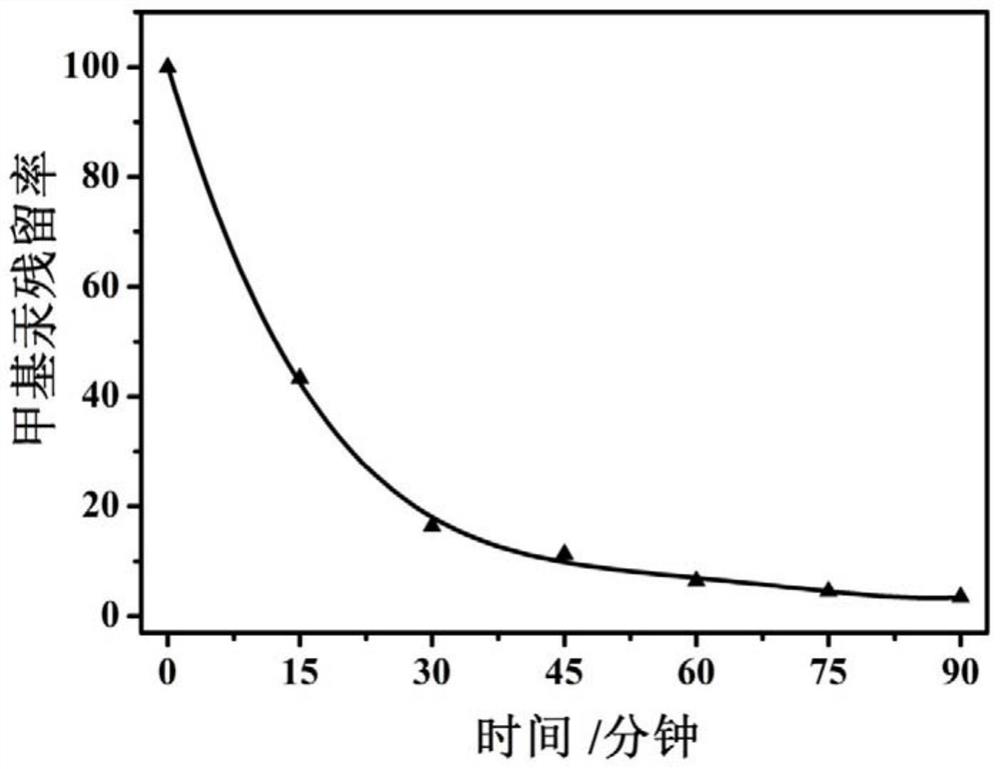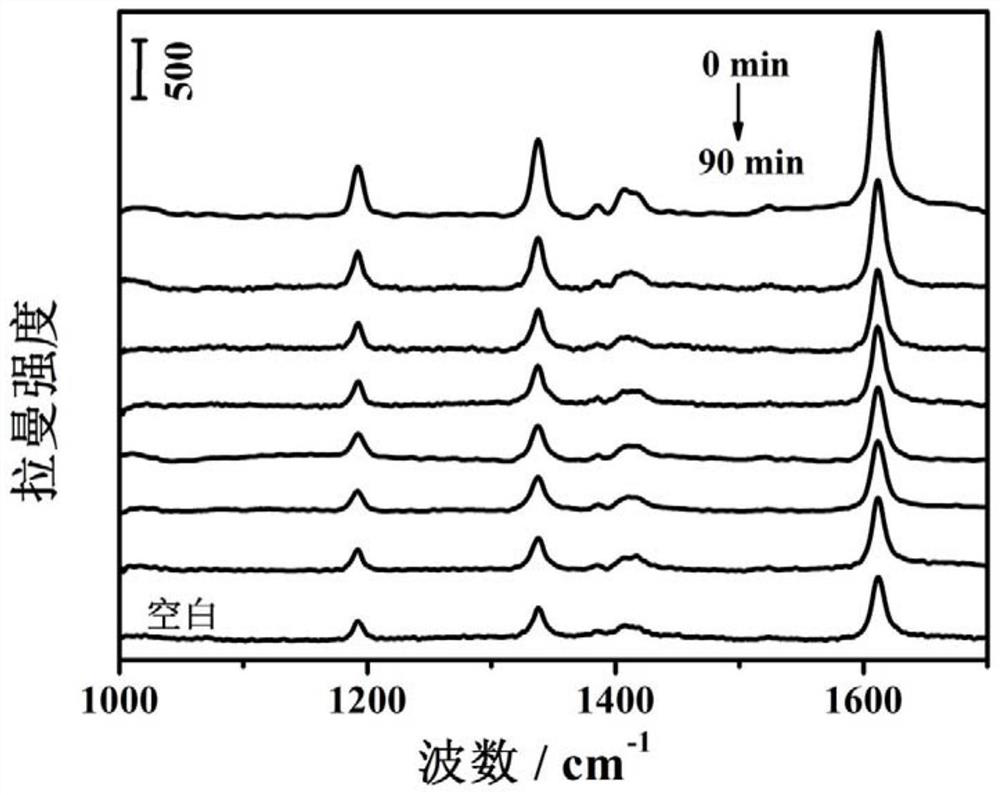Method and device for removing methyl mercury in sewage by using ternary composite nano material
A ternary composite, nanomaterial technology, applied in water/sewage treatment, chemical instruments and methods, oxidized water/sewage treatment, etc., can solve the problems of complex sample pretreatment process, inability to quickly and accurately detect, and long test time, etc. To achieve the effect of simple removal process, enhanced catalytic degradation ability, and low removal cost
- Summary
- Abstract
- Description
- Claims
- Application Information
AI Technical Summary
Problems solved by technology
Method used
Image
Examples
preparation example Construction
[0046] In some preferred embodiments, the preparation method of the ternary composite nanomaterial comprises: making a uniformly mixed reaction system containing a hydrotalcite-like compound precursor, a redox graphene, a metal salt, a reducing agent and a solvent at 120-180° C. The reaction is carried out for 18-22 hours to obtain the ternary composite nanomaterial.
[0047] Further, the precursor of the hydrotalcite-like compound includes any one or a combination of two or more of a combination of a nickel salt and an iron salt, a combination of a magnesium salt and an aluminum salt, a combination of a copper salt and an iron salt, etc., but not limited to this.
[0048] Further, the nickel salt includes nickel acetate, but is not limited thereto.
[0049] Further, the iron salt includes iron nitrate, but is not limited thereto.
[0050] Further, the magnesium salt includes magnesium nitrate, but is not limited thereto.
[0051] Further, the aluminum salt includes aluminu...
Embodiment 1
[0095] Synthesis of ternary composite nanomaterials:
[0096] 3ml redox graphene (2mg / ml), 5ml nickel acetate (0.2mol / L), 1ml ferric nitrate (0.2mol / L), 5ml chloroauric acid (0.02mol / L) and 7.5ml dimethylformamide Add it into a round bottom flask, stir magnetically at 25°C for 1h; add 80μl hydrazine hydrate (80%) dropwise, stir magnetically at 25°C for 0.5h; add 3.5ml ultrapure water, stir magnetically at 25°C for 0.5h. The mixed solution was added into the reaction kettle, placed in an oven and heated at 120°C for 16h, and then heated at 180°C for 2h. Cool to room temperature, add 30ml of ultrapure water and sonicate for 5 minutes, then centrifuge (10000rad / min), repeat the above steps, wash with water 3 times, wash with ethanol 3 times, and dry the product at 50°C for 12h to obtain a ternary compound with oxidase-like properties nanomaterials.
[0097] Treatment of methylmercury in sewage:
[0098] The inventive device such as figure 1 Shown is composed of sewage pool 1,...
Embodiment 2
[0109] Weigh 10mg of ternary composite nanomaterial with oxidase-like properties and 1ml of methylmercury aqueous solution (10 -4 mol / L) were mixed evenly, and allowed to stand at room temperature for 2 h. The mixed solution was centrifuged (10000rad / min), and the supernatant was taken for surface-enhanced Raman (SERS) detection.
[0110]Prepare a 3 mg / mL ternary composite nanomaterial solution with oxidase-like properties, take 30 μL of the aqueous solution and add it to 970 μL of acetic acid-sodium acetate buffer solution with a pH value of 4.2, and sonicate for 30 seconds to obtain a concentration of 0.09 mg / mL A ternary composite nanomaterial solution with oxidase-like properties; prepare a 15 mmol / L dimethyl sulfoxide solution of 3,3',5,5'-tetramethylbenzidine (TMB), and add 30 μL of the aqueous solution to In 970 μL of acetic acid-sodium acetate buffer solution with a pH value of 4.2, sonicate for 30 s to obtain a TMB chromogenic solution with a concentration of 0.45 mm...
PUM
 Login to View More
Login to View More Abstract
Description
Claims
Application Information
 Login to View More
Login to View More - R&D Engineer
- R&D Manager
- IP Professional
- Industry Leading Data Capabilities
- Powerful AI technology
- Patent DNA Extraction
Browse by: Latest US Patents, China's latest patents, Technical Efficacy Thesaurus, Application Domain, Technology Topic, Popular Technical Reports.
© 2024 PatSnap. All rights reserved.Legal|Privacy policy|Modern Slavery Act Transparency Statement|Sitemap|About US| Contact US: help@patsnap.com










